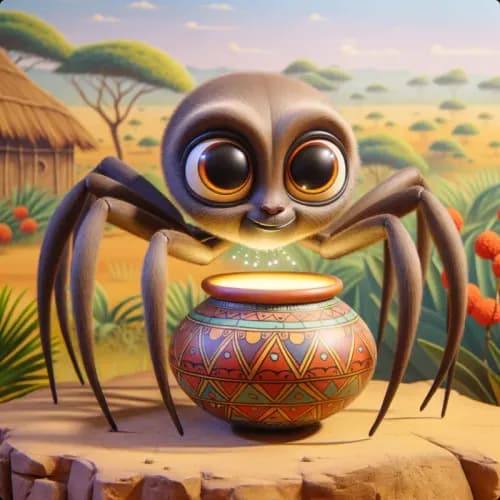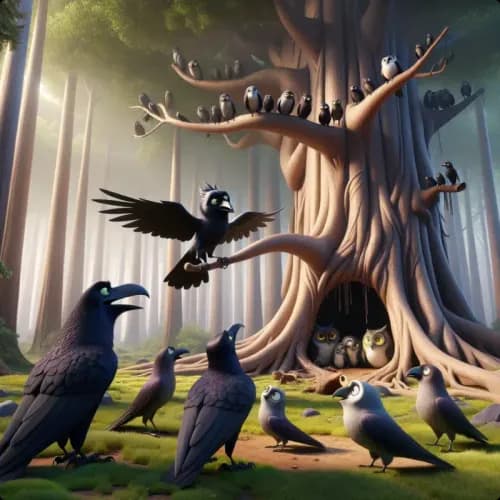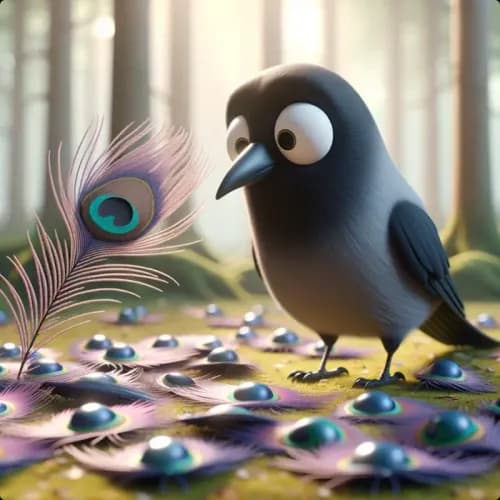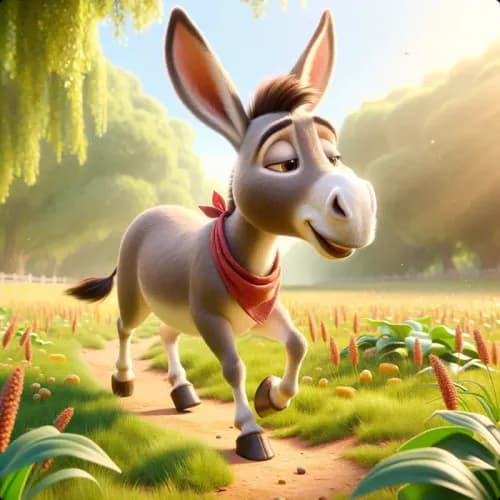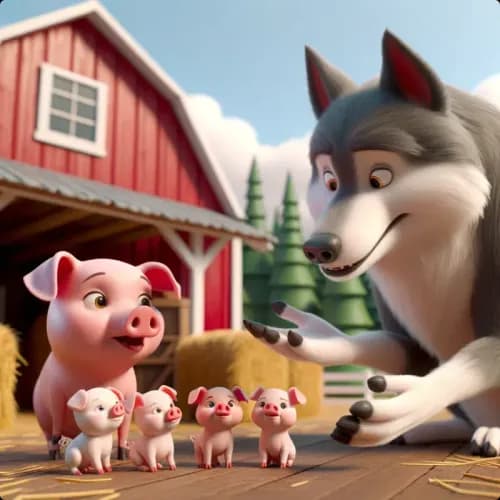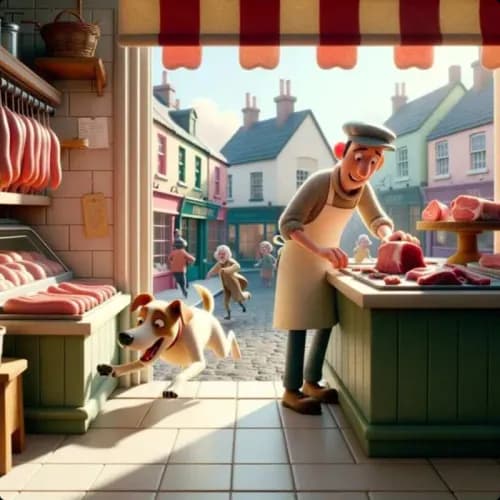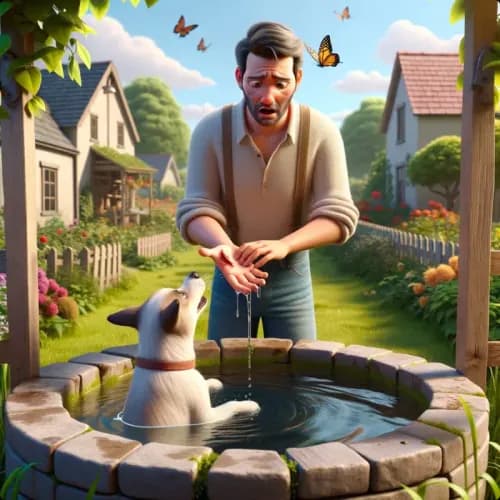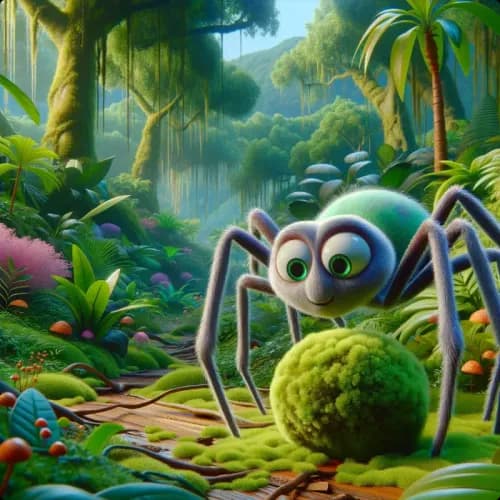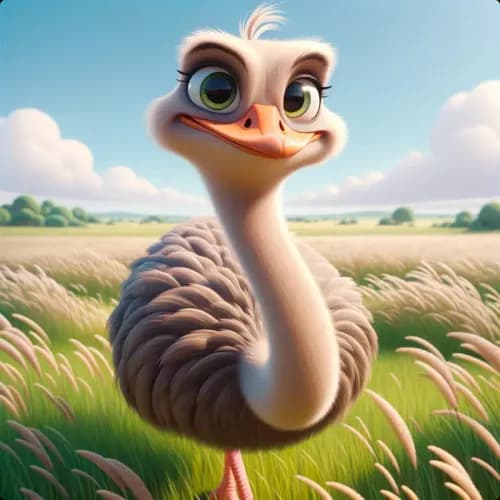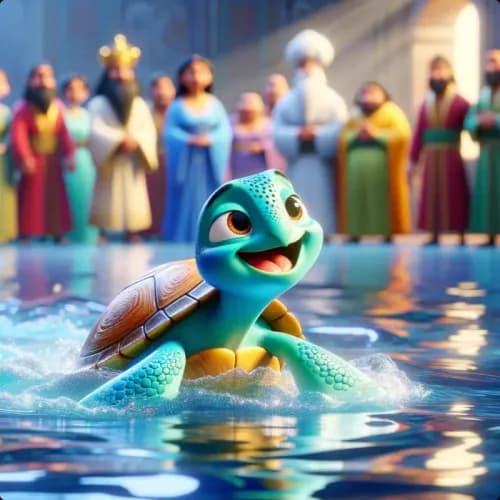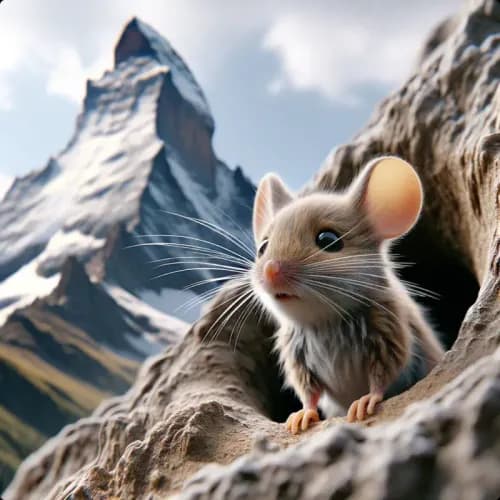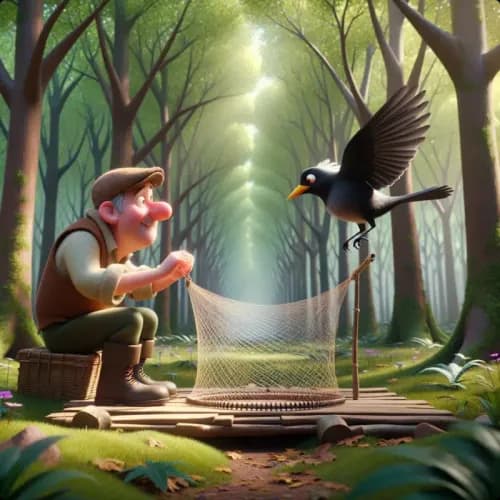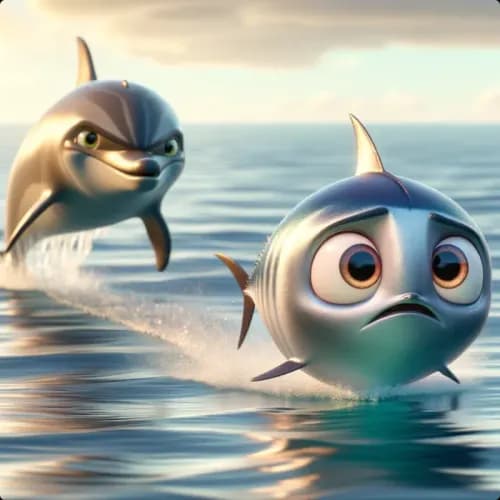Aesop | Greece
The One-Eyed Doe
A doe with one good eye stayed close to a cliff, feeling safe from harm, but was ultimately shot from an unexpected direction.
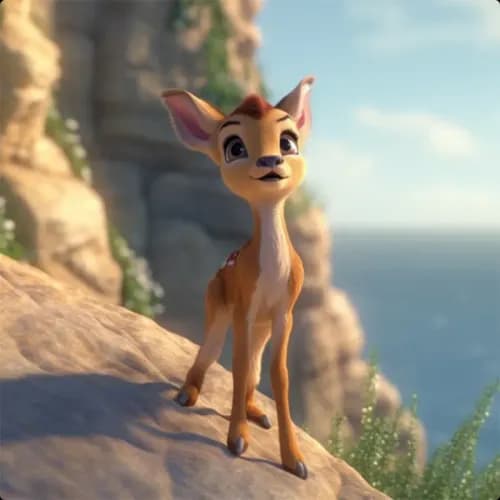
Once upon a time, there was a doe, a kind of deer, who couldn't see well with one of her eyes. But her other eye was perfectly fine. She thought she was clever and stayed close to the edge of a high cliff where she felt safe.
She always looked at the land with her good eye to see if any hunters or dogs were coming. Her bad eye, the one that didn't see well, looked out over the sea. She believed nothing bad could come from the water.
One day, some men in a boat were sailing close to the shore. They saw the doe standing near the cliff. Quietly, they aimed an arrow at her and hit her. She fell down.
As the doe lay there, she thought, "How did this happen? I thought I was safe by the sea. I never thought danger could come from this side."
The poor doe learned too late that danger can come from anywhere, even from places we don’t expect.


